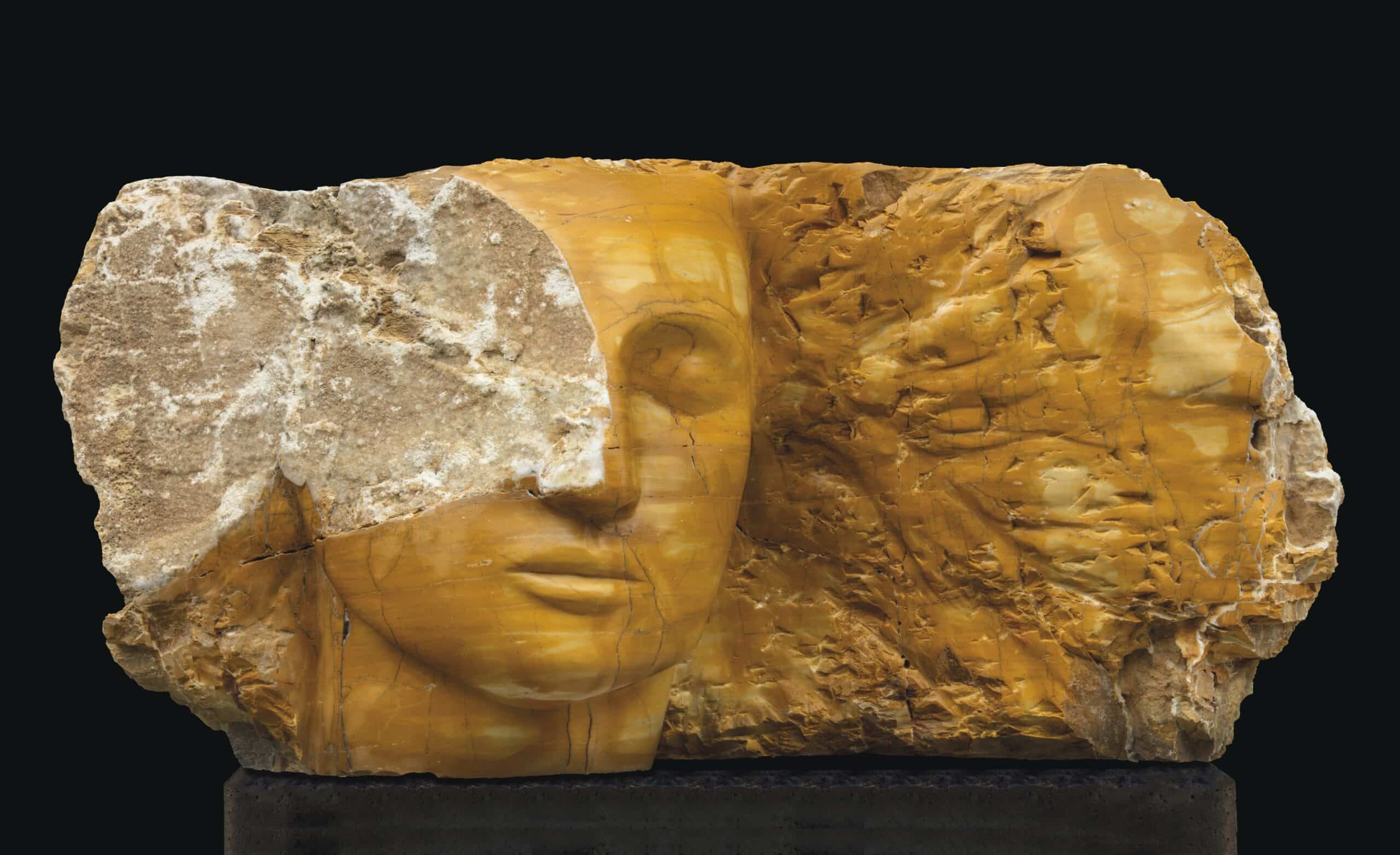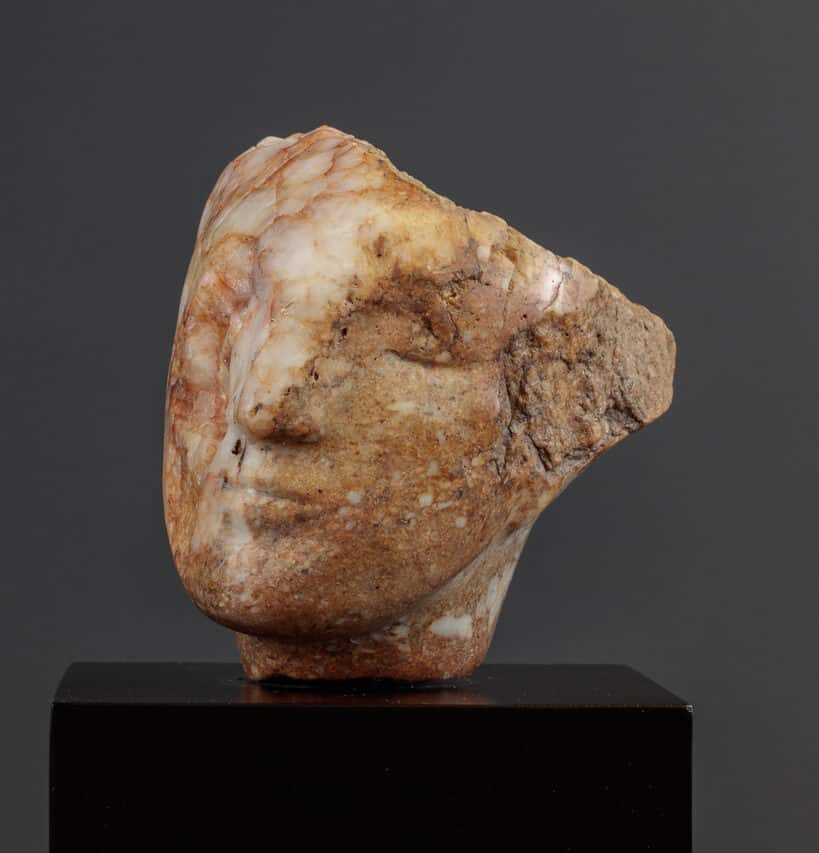Following the news of sculptor Emily Young’s inclusion in the 2024 Venice Biennale, we are honoured to highlight two of her stunning smaller “angels”—compact answers to the multi-tonne creation, Lost Mountain Head I, which will be on display on the grounds of the Giardini della Marinaressa throughout the world-renowned event, alongside five additional works.
Considered Britain’s “greatest living stone sculptor,” Young began carving at an early age, using the offcuts from a family countertop project. She has been ushering forth the inner aspirations of ancient rock for more than 40 years.
Carving the soul of stone
Young’s approach to sculpture centres on the innermost desires of the stone. Not every rock is willing to be worked, Young notes, but when she feels that a piece is open to transformation, she is quickly moved to reveal what is beneath the coat of grey dust, the mossy overlay, the insects and spiders and tiny plants that have made their home for thousands, millions, or billions of years. Thus begins Young’s quest to unveil what she calls angels, creatures, or humans.
Three themes emerge in Young’s work: the circle, the torso, and the face. As Young explains, the circle represents the sun and the moon, essential to life on earth. The torso bears so much of what we are and need to survive, and the face is the frontispiece, the looking, seeing, feeling, and thinking.

Monumental touchstones to Mother Earth
Like the rock itself, these are themes that have existed as long as people have existed and will continue into the far reaches of time.
That is if we do not first destroy our planet’s ability to bear life. As Young explained to Nick Glass in a 2023 interview, “We thought the Earth is this great beneficent mother and we can take anything we want from her…we now know she is not infinitely generous; she has her limits.”
Young’s conservation efforts go beyond working with deeply natural and ancient materials. In 2015, her 12-tonne sculpture, The Weeping Guardian, joined other marbles on the floor of the Tuscan Sea, where illegal trawlers had stripped the coastal seabed bare. Just months after the rocks arrived, they were already home to a vast array of sea-life, beginning the arduous and vital process of restoring the stripped sea.
Despite Young’s sense that we have direly “misread our relationship with the earth,” she hopes that her beautiful, calming sculptures will offer the viewer even the most fleeting moment of calm in these troubled times.

A unique and emerging hidden face
It is this calmness with which Young seeks to imbue the faces she welcomes out from the heavy depths of ancient stone. She uses her incomparable skill to depict and encourage, in both viewer and sculpture, a contemplative, reflective, internal repose. Alive but still, just as she describes the rock itself.
Each piece of stone, from 50,000 to 2.5 billion years old, bears a unique beauty. Pocked and pitted travertine and ice-smooth alabaster both offer textures that inspire the shape that emerges. The vibrant blues of lapis lazuli lend a very different air than the delicate marbling of quartzite, yet both accentuate and complement the final angels that emerge, partially embedded in the rock, yet whole.
From far away but home
Young’s exhibition at the Venice Bienale is an interesting angle to this year’s theme: Foreigners Everywhere. While the title has raised questions of Indigenous erasure—if we are all foreigners, then no one is native to the land and no one holds the rights inherent in that distinction—the six Young sculptures highlight the eternal and global nature of the ground on which we tread, whether for the first time or the thousandth, as well as the “foreignness” of the creatures themselves, being unearthed and shipped from their home soil.
The sculptures Young creates trace geological time and they will also stand the test of time. As Young’s biography proclaims, “her approach invites the viewer to comprehend a commonality across deep time, geography and cultures” and “brings the relationship of humankind and the planet into closer conjunction.” By reminding us all what lies within the rising cliffs around us and the ground deep, deep beneath our feet, Young’s angels are a gentle call to always remember and to tread lightly upon this Earth.



